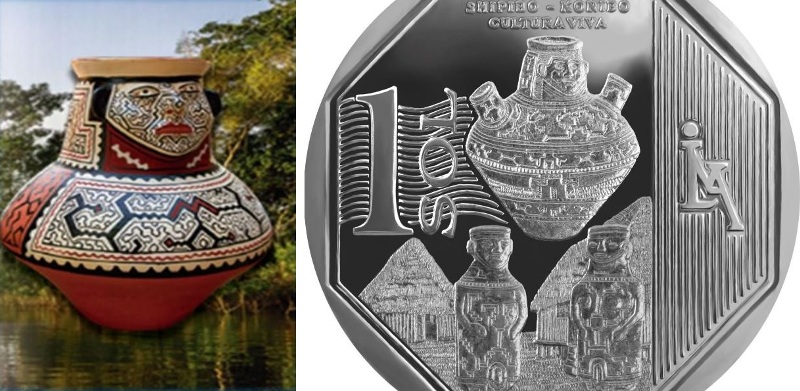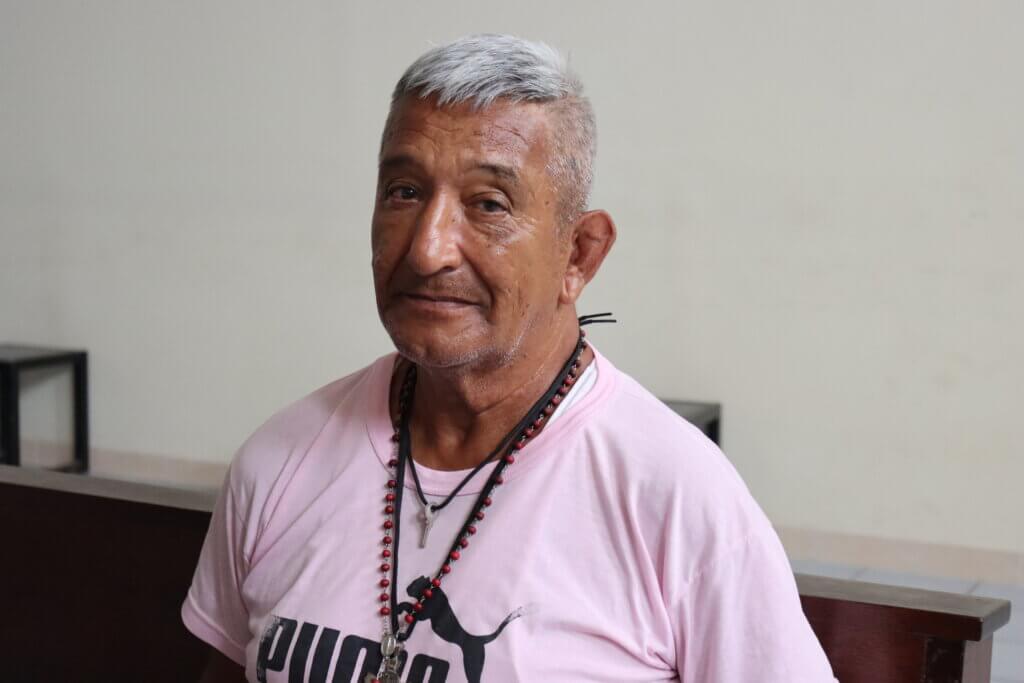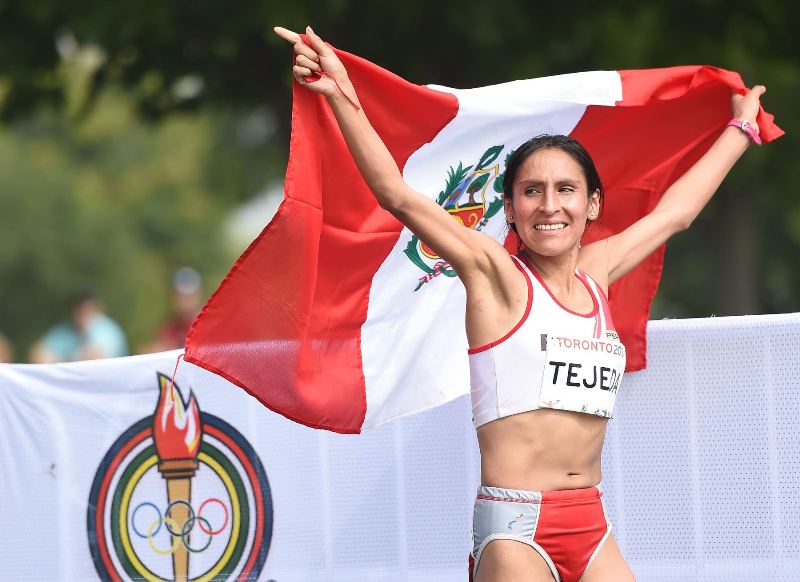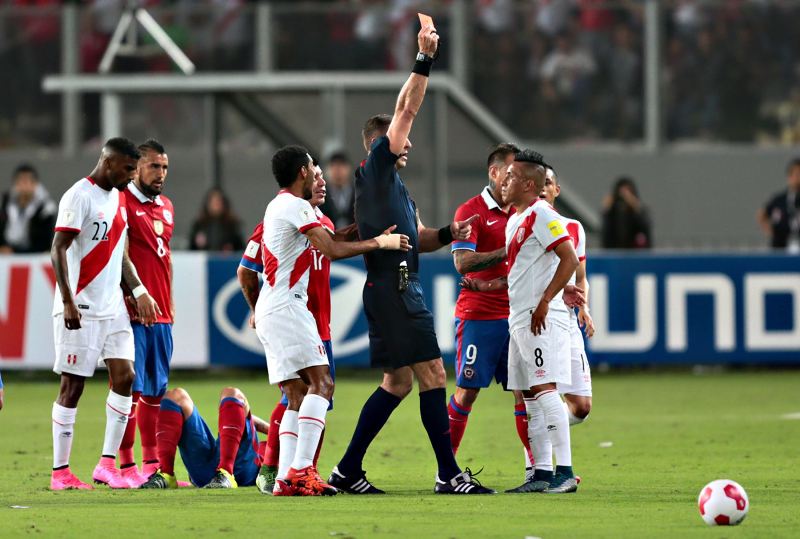Peru’s central bank has issued a new sol coin which features pottery and architecture from the Shipibo-Conibo culture found in the eastern jungle state of Ucayali.
The bank will issue 12 million of the coins featuring the clay pottery known for its colored geometric patterns modeled after the skin of the anaconda. The Shipibo pottery tradition dates back to 800 A.D.
“The clay, colored red, black and white, is combined with ashes from the apacherama tree and the ground dust of old vessels. The mixture is kneaded into rolls that are twisted to form new parts. This technique replicates the movement of the cosmic anaconda, “Ronin,” which created the rivers and forests by coiling up along the ground,” writes culture ministry anthropologist Maria Belaunde.
“Before heating, the pieces are painted with complex geometric designs called “kene,” which seem to wrap the ceramics in a hypnotic halo of light and movement. These designs come from spots on the skin of the cosmic anaconda, and the jars communicate [the snake’s] powerful energy of transformation.”
The coin also features two thatched-roof huts typical of the Shipibo villages in the jungle.
The Shipibo-Conibo people live in the Ucayali river basin. Their pottery, beads and textile handicrafts are the most emblematic of the tribes of the Amazon. The culture ministry estimates the Shipibo-Conibo community’s population at over 31,000.
In the 1990s much of the community migrated to Ucayali’s provincial capital of Pucallpa. Populations can also be found in the cities and towns of Madre de Dios, Loreto and Huanuco states. One of the better-known Shipibo communities lives in an informal settlement on the banks of the Rimac river, in the Rimac district on the other side of the river from downtown Lima.
Shipibo is one of 47 official languages recognized by Peru’s government.
The Shipibo-Conibo coin is the 25th of what will eventually be 26 in the Wealth and Pride series. Other coins in the series highlight Machu Picchu, the Lima cathedral, the Santa Catalina monastery in Arequipa and more. The last two coins issued in the series featured the Cabeza de Vaca archaeological site in Tumbes and Vicus ceramic pottery in Piura.
Sources
Cerámica Shipibo-Konibo (BANCO CENTRAL DE RESERVA DEL PERÚ)
Shipibo-konibo Pueblo indígena (Ministerio de Cultura)










